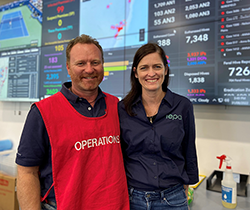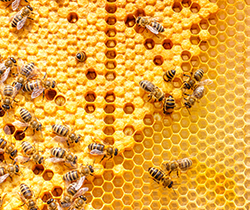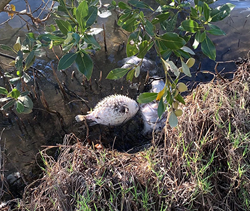Responding to incidents and biosecurity threats
The EPA plays an important role in managing or preparing for incidents involving biosecurity risks to stock, wildlife and the environment.
Varroa mite and foot and mouth disease
In response to multiple biosecurity threats facing NSW, we have established a dedicated Incident Management Team to respond to the continuing Varroa mite incursion and prepare for the potential threat of Foot and Mouth Disease.
This team is supporting the NSW Department of Primary Industries (DPI) which is leading the response to these issues.
Varroa mite (Varroa destructor) is an exotic deadly parasite of the European honeybee, which was detected in sentinel hives at the Port of Newcastle in late June. Our role is focused on waste and disposal, whilst managing any environmental risks arising from the response.
Fortunately, Australia remains free of foot and mouth disease, however, the risk of an incursion in the next five years has been predicted at 11% by the Federal Government. If an incursion did occur, it is estimated to have an impact of $80 billion over the next 10 years to Australia's export market. For this reason, NSW is actively preparing for an outbreak. We meet regularly with NSW DPI and support agencies to plan transport and disposal options.


Ongoing investigation into Mannering Park fish kill
We continue to assist communities on local incidents such as the recent fish kill at Lake Macquarie.

Following the first fish kill incident at Mannering Park, Lake Macquarie our initial investigation suggested it was a natural event.
Our EPA officers, Central Coast Council and NSW Fisheries attended the site and collected fish and water samples for laboratory analysis.
Through extensive water sampling, toxicity testing and analysis there are no significant findings of pesticides, metals or toxicity.
The NSW Department of Planning and Environment labs tested for a full suite of metals and pesticides and found levels below the Australian and New Zealand Environment Conservation Council (ANZECC) marine water quality guidelines (where guideline limits are specified).
Delta Electricity, licensee of the Vales Point Power Station provided the EPA with new information relating to the fish kills. As a result, we inspected the Vales Point Power Station facility on 13 September 2022 and secured equipment on-site as part of our investigation.
Testing was also undertaken, and we are conducting further enquires. The EPA has requested a further report from the licensee and this information will form part of the EPA’s ongoing investigation.
We know the important role Lake Macquarie and the bay plays in the community and the region’s wider environment and will continue to monitor the coastal lake.

